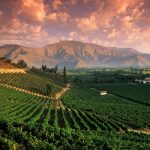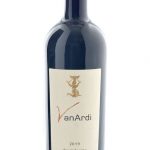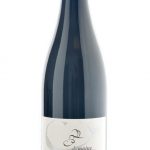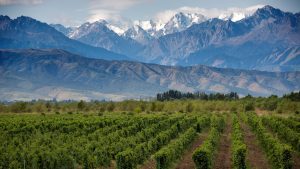 The Andes are the tallest mountains in the Western Hemisphere, dwarfing the Rockies and the Sierras with their sheer magnitude. Only the tallest peaks of the Himalayas can top those of the Andes. However, the Andes are more than a geologic mass, they are a mystical experience. They cast their shadows and mysteries upon the present day population of South America as they did the ancient Pre-Columbian peoples who inhabited their lower reaches.
The Andes are the tallest mountains in the Western Hemisphere, dwarfing the Rockies and the Sierras with their sheer magnitude. Only the tallest peaks of the Himalayas can top those of the Andes. However, the Andes are more than a geologic mass, they are a mystical experience. They cast their shadows and mysteries upon the present day population of South America as they did the ancient Pre-Columbian peoples who inhabited their lower reaches.
Without the towering Andes, there would be no cultivation of the vine in Mendoza and no real agriculture as we know it, nor would viticulture thrive in the river valleys of central Chile, which lie just across the Andean spine, or Cordillera, from Mendoza – a mere one hundred miles as the condor flies, but still a torturous eight-hour adventure by car. Simply, it is the Andes that give life to the desert like Mendoza and the arid rift valleys of Chile. Specifically, it is Andean snows that accumulate upon the higher elevations of the Andes that give life and sustenance to these parched parcels of South America that yield the continent’s finest wines.
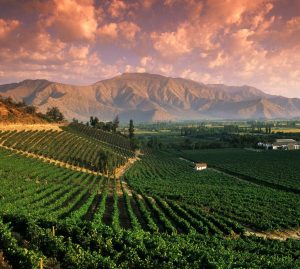 In order to make the desert bloom, the inhabitants of the Andes have come to rely on their mighty mountains for water. By sluicing off the Andean snow melt and directing its waters into canals, much of Argentina and Chile are now productive farmland and especially suited to the cultivation of the vine. Since the Italian migration to Argentina in the 19th century and subsequent settlement in the Illinois-sized province of Mendoza, the Mighty Mendoza has become the largest wine producing area in South America, ranking Argentina among the world’s leading wine producing nations. Without the Andes, there would be no wine or much else to speak of from Mendoza or many of the productive valleys of neighboring Chile.
In order to make the desert bloom, the inhabitants of the Andes have come to rely on their mighty mountains for water. By sluicing off the Andean snow melt and directing its waters into canals, much of Argentina and Chile are now productive farmland and especially suited to the cultivation of the vine. Since the Italian migration to Argentina in the 19th century and subsequent settlement in the Illinois-sized province of Mendoza, the Mighty Mendoza has become the largest wine producing area in South America, ranking Argentina among the world’s leading wine producing nations. Without the Andes, there would be no wine or much else to speak of from Mendoza or many of the productive valleys of neighboring Chile.
In 2021, Chile and Argentina were respectively the 6th and 7th largest producers of wine around the world. Although black grapes and red wine constitute the majority of both nation’s production, white wines now garner equal praise. French varietals predominate with Cabernet Sauvignon, Carmenère, Malbec, Pinot Noir, Syrah, Chardonnay, and Sauvignon Blanc all in abundance. However, other worthy varietals and blends are increasingly finding their way to our shores. Moreover, the list of exceptional Chilean and Argentine produces expands each year. Aquitania, Casa Silva, Casas del Bosque, Mayu, P.S. Garcia, Catena, Graffito, La Posta, Luca, Mendel, and Tikal are just some of the finest and most consistent Andean wine producers. Viven Los Andes!

